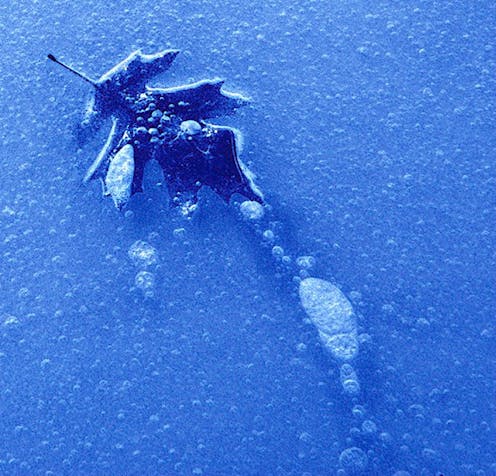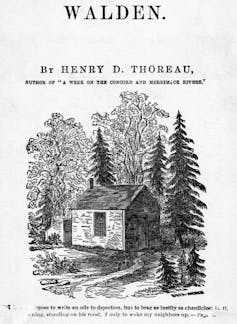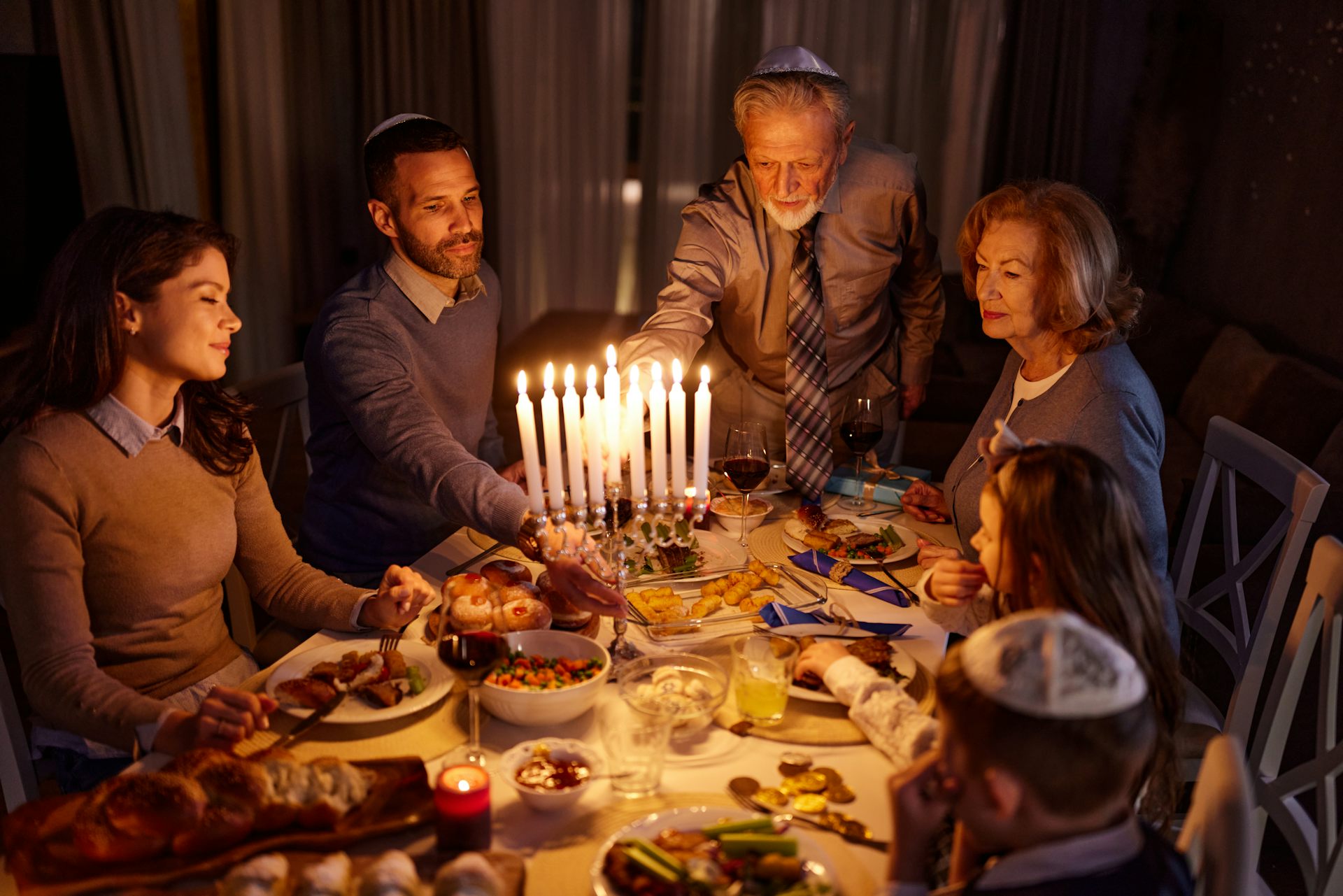5 wintry books to read during long nights
A literature professor suggests some classic reads to curl up with when it is cold.

Winter solstice brings the shortest day and longest night of the year in the Northern Hemisphere. It’s a great night to spend reading.
I’ve taught English and creative writing in snowy Binghamton, New York, for more than 40 years – reading, writing, reviewing and judging books all the while – so it’s never hard for me to find something to read. Only to choose.
To save you the same indecision, I’ve picked five books for the darkest time of the year.
1. Henry David Thoreau, “Walden Pond” (1854)
Thoreau’s “Walden Pond” is America’s most celebrated nature book, filled with the author’s observations of the woods near Walden Pond in Concord, Massachusetts. “Walden” begins in July, but Thoreau welcomes winter in some of the book’s most beautiful passages.

“The north wind had already begun to cool the pond,” Thoreau writes, when he “went into winter quarters.” Not that he stayed indoors much.
Most of us won’t stretch out face down “on ice only an inch thick,” as Thoreau reports doing, but we can read about him doing it while staying warm. Thoreau noticed frozen bubbles, stacked “like a string of beads” or “silvery coins poured from a bag.” He catalogs – how he loves cataloging! – the colors of the pond, from “transparent” to dark green to “opaque and whitish or gray.” In winter he burned pine, decaying stumps, hickory, dry leaves and logs he’d dragged home while skating across the pond. Fuel provided him warmth, cooked food and company. “You can always see a face in the fire,” Thoreau wrote.
In winter he welcomed rare humans, such as fellow writer Louisa May Alcott’s father, Bronson. But mostly he encountered foxes, squirrels, chickadees, jays and a barred owl that he described as the “winged brother of the cat.” Thoreau delights in the sound of the ice booming in a thaw and describes moonlit rescues of hikers he escorted back to the edge of civilization.
The five chilly chapters of “Walden” comprise a winter sampler for those who haven’t read this mighty book — and for those returning to it.
2. Robert Frost, “The Poetry of Robert Frost”
No poet sang of winter like poet laureate and New Englander Robert Frost. In his great “Stopping by Woods on a Snowy Evening” he pays homage to winter’s solitude:
“Between the woods and frozen lake/The darkest evening of the year.”
“The Poetry of Robert Frost” weighs in at more than 600 pages. “You Come Too,” a beautifully curated edition of poems for the young, is less than 100.
Both books contain popular midwinter favorites. Even their titles suggest the poet’s strong connection to winter: “Looking for a Sunset Bird in Winter”; “A Hillside Thaw” (“Ten million silver lizards out of snow!”); “Good-by and Keep Cold”; “A Patch of Old Snow.”
In “Birches,” Frost writes of branches that turn raindrops into ice crystals melted by sunlight.
Shattering and avalanching on the snow-crust –
Such heaps of broken glass to sweep away
You’d think the inner dome of heaven has fallen.
Frost’s poems are easily memorized and lovely to read aloud over any blustering gales.
3. Dylan Thomas, “A Child’s Christmas in Wales” (1952)
As Frost wrote for all ages, so did Dylan Thomas in “A Child’s Christmas in Wales” – available in its original Tiffany blue New Directions paperback edition, decorated exquisitely with illustrations by Ellen Raskin – a winter’s poem made to be sung. We can even hear the poet chanting it aloud on his 1952 recording.
One need not be Welsh to love Thomas’ seaside childhood. One need not even celebrate Christmas.
“One Christmas was so much like another,” the poem opens, “that I can never remember whether it snowed/for six days and six nights when I was 12/or whether it snowed for 12 days and/12 nights when I was six.”
4. Italo Calvino, “If on a Winter’s Night a Traveler” (1979)
Italo Calvino bundles magic, metafiction, philosophy, danger and love into “If on a Winter’s Night a Traveler.” It’s Calvino’s most mystifying work, challenging readers’ assumptions about reading and storytelling.
Not exactly a novel, it comprises the first chapter of 10 invented novels by 10 imaginary authors. Is it still winter? a reader may wonder. Was it ever winter?
As Calvino admits, “The only truth I can write is that of the instant I am living.”
5. James Fenton, “A Garden from a Hundred Packets of Seeds” (2002)
Some gardeners spend all winter dreaming. Others spend it busily planning.
“A Garden from a Hundred Packets of Seeds” proposes a radically old-fashioned approach – to grow a garden simply sprung from seed. Author James Fenton explains, “[S]imple-mindedness was a part of what I was after: buy a packet of nasturtium seeds and plant them, grow some very tall sunflowers – this is what gardening should be all about.”
A garden doesn’t need expensive starter plants or even a plan. The great question in life, as well as with gardens, is: What do I want to grow?
Winter unearths simplicity – the stark black-and-white vista it presents, the bare-boned landscape. It encourages readers to follow suit by ridding themselves of the extraneous and making room for life. As the celebrated saying goes, “If you choose not to find joy in the snow, you will have less joy in your life but the same amount of snow.”
Besides, as December ends, we turn the corner toward light.

Liz Rosenberg does not work for, consult, own shares in or receive funding from any company or organization that would benefit from this article, and has disclosed no relevant affiliations beyond their academic appointment.
Read These Next
As a former federal judge, I’m concerned by a year of challenges to the US justice system
A university president who’s a former federal judge looks at the rule of law and the Trump administration’s…
Tariffs 101: What they are, who pays them, and why they matter now
Tariffs are taxes on imports, but the costs don’t stay at the border.
The dystopian Pottersville in ‘It’s a Wonderful Life’ is starting to feel less like fiction
Frank Capra’s dark vision of corruption and greed highlights both the dangers of concentrated power…






